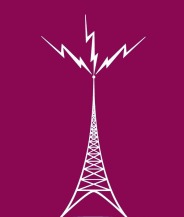I just got done reading an Ebook titled "Communications and Behavior Change" written by Mark Lund, CEO of Government Communications Network. It covers the factors associated with changes of behavior and outlines ways in which these factors can be manipulated. It got me thinking about a recent quote I read from marketing guru Jack Trout that states, "If your assignment is to change people’s minds, don’t take it.”
Let's take a deeper look. At the most basic level, we can look at behavior in the form of the AIDA model. This model states that providing information will spark interest that will in turn lead to an action or a change in behavior. This does make sense, however, rarely is information enough to change a behavior (smoking, tanning, drinking). Attitudes, or personal feelings towards a person, place, or thing have always been linked to behaviors, but the link is not as strong now. For example, just cause you don’t like a certain bar doesn’t mean you won’t go if your friends are all going. Just because you don't like Apple doesn't mean you won't get an iPod. However, just like with providing information, changing an attitude is often not enough to change a behavior. Cognitive dissonance comes when a person holds two inconsistent views. For example, a smoker knows that they could get cancer and live a shorter life, but more often than not they say “I know someone who lived till they were 100” or “smoking keeps me skinny” as factors that justify their behaviors. People often do this when making consumer decisions as well. "I don't really like going to that bar but it's close" or "I don't want to see that movie but it is getting good reviews." The key for communications specialists is to find a way to take out the dissonance, and motivate behavior towards what they really want to do, despite the relative information. Habit and routine are also leading factors in behavior. If you’re used to doing something, most likely you’ll continue doing it. Something new might not be so easy. For example, if you often leave the TV on all night, it would be hard for me to convince you to turn it off every night. If you love eating Red Meat, it would be hard for me to convince you to become a vegetarian. Breaking these habits often requires an emotional stir-up at the point of use. For example, to get you stop eating meat I would need to hang a picture of a bloody pig in front of your refrigerator. To get you to quit smoking I would need to put a picture of your Grandpa who died of cancer on your car’s dashboard. Emotions play a huge part in behavior changes. I suppose this is one of my personal favorites. A lot of the times, communication tries to play on emotions a little too much. For example, I just saw a Christmas campaign for Kay Jewelers that focuses on a deaf woman and her boyfriend signing to one another - too emotional. The dog commercials with the sad music – way too emotional. The thing is, they work. Mental shortcuts are also a common factor of behavior. These refer to instances where you make decisions based on events you can immediately recall. For example, most people are more scared of flying than driving because you can immediately recall a horrible plane crash. You’re more likely to buy a lottery ticket when the prize is the highest because it is easier to visualize what you could do with the largest amount of money. Communications needs to allow people to visualize everything on an equal playing field. Social norms play a huge role in the decision making process. For example, imagine you’re at a party. Typically you’re not the first one to eat whatever food is laying out, but once someone else gives it a try, it’s fair game for everyone to join in. Basic idea, but how can communications agencies send a message of “acceptable behavior” to encourage action? It requires a call to action to companies to be an opinion leader. Drive a message home and send it through respective mediums to gain followers. If you can make a destination the “place to be,” people will come. Environmental factors are another player in the communications game. For example, someone may want to use public transportation but if there aren’t any bus stations around, they’ll have to use a car. Same goes with any business. People might want to go hear live music at your bar, but if they don’t know it exists, where it’s located, or who’s playing, they’re going to choose another option. What it all comes down to is communications 2.0. It's no longer about just throwing a message out, it's about understanding the message, its audience, and their underlying reasons for behavior. Truthfully, I'm still trying understanding all this myself, but i'm excited about the possibilities. In the world of communications, being an early adopter is key. What's even better than an early adopter? An innovator. I look forward to seeing you on the other side.
0 Comments
The economy is in the dumps. It's official. I recently read an article from a recruiter who posted a job on Craigslist and received over 200 emails within a few hours. For the past few months, I've been one of those emails. I've been part of the lucky few to actually get a few interviews here and there. The problem? The competition is so stiff out there that it's almost ridiculous. There's no more chances, optimism, or hand-holding; you either fit the bill perfectly or you're not getting hired. Simple as that.
Rather than sit around and keep waiting to find the next posting on Craiglist or Monster like the thousands of others out there, I've decided to take a stab at a new, more productive approach to the down & out economy: consulting. A lot of people were confused by my Thanksgiving post. What is he doing at Upper End Properties? What is his business? What's going on? For those of you wondering, I'll give you a brief update. In October I was given my first "consulting" job as the marketing specialist for Upper End Properties, a brand new real estate company in Clayton between Brentwood and Hanley. What am I doing? I'm leading strategy behind digital and online marketing. What does this consist of? I'm giving the company a brand presence on Linkedin, Twitter, Facebook, Google, and Wordpress. I'm producing content, socializing, interacting, and doing my best to increase brand awareness and generate sales leads by using cost-effective methods that reach a direct target audience. A lot of people laugh about this whole idea of social media marketing. It's not a full-time job, it's not the end-all of marketing, and it isn't the most effective medium to get results or a return on investment, but it's free, it's powerful, and it is revolutionizing the way people interact with brands. Sure, most people can't make a living tweeting for a brand, but imagine tweeting for 5 brands. Imagine building a Facebook presence for five small companies. The future of business may not be digital, but it will be social, and if I can lead businesses in the right direction with low-cost solutions, this fad may just turn into a full-time opportunity. This leads to to where I'm at now - in the business of consulting. Without giving too many details out prematurely, I will say that there are some very exciting opportunities on the table. With the new year will come some new information regarding this business and I look forward to filling you all in. I've been experimenting a lot lately with new marketing tactics. Little things that I think can be extremely effective at little or no cost to an individual, a brand, or a company. For example, tonight I was at Pomme Wine Bar in Clayton with a few friends. On my way out, I placed two business cards on the table, and strategically dropped one on the floor on the way out. I mean, truthfully, the two on the table probably got picked up by the hostess and thrown away, and the other probably got swept up into the trash, but I can't help but think about the possibilities.
Imagine the hostess being the daughter of a couple who was looking to buy or sell a house. She'd see the card, mention it to them, and there's a sale. Imagine the young couple sitting next to us was in the market for a condo and they saw the card on the floor as they were leaving the bar. By the end of the night, I got 800,000 worth of sales possibilities just from dropping a few cards. Total cost of the marketing on my end: about 10 cents. The problem we often face in marketing is lack of participation by the audience. We can deliver some great messages through some very effective mediums, but if the audience isn't "getting" the message and exploring it on their own, then nothing has really been accomplished. I'm a marketing guy. I live for it. I dive deep into brands, interact, entertain, and engage in almost anyway way I can. The problem lies in the fact that most people aren't as fond as I. For example, being with a real estate company right now, I could go out to a parking lot and hit 100 cars with a flyer that said "TheBestHousesEver.com" that linked directly to our listings. If I got this flyer, I'd go to the site, but 99% of other people probably wouldn't. I think what I'm getting at is the idea of guerilla marketing. Giving people the chance to receive a message, but relying on them to put in some work. Is this type of messaging effective? Would you pick up my business card? Would you go to the website? I'm interested in how far people will go into the unknowns of advertising. I know the road I travel, but I think most audiences take a slightly different path. The conversation started around 1:15 PM and ended around 1:27PM. Let's just say I wasn't a good fit. The position we discussed on the phone sure as heck didn't seem like a Field Marketing Specialist. It sounded more like a Promotions Manager. They needed someone to find brand ambassadors, someone to tell them what bars to go to, and someone to make sure they interacted with college students at parties, bars, and sporting events. Sure it all relates to marketing, but does it really warrant the label, "marketing specialist?" On the phone I talked about the big ideas that I had for this position. If we wanted to create a local brand, we would need local platforms to interact with St. Louis on an individual level. We would need a Twitter account, a Facebook page, and a blog. We'd post up to the minute messages to let people know where we were. We'd have a GPS enabled map on our Facebook page so people could find us. We'd post pictures, videos, interviews, creative content, and anything and everything Red Bull. We'd post bios of our team members, we'd sponsor parties, and we'd create connections through each and every social network in STL. We'd post random Red Bull stashes in STL and promote the whereabouts through Twitter and Facebook. We'd take pictures at parties and post them on Facebook. We'd give individuals links to download the pics the next day. We wouldn't just show up to a party or a sporting event, we'd be the reason people would be going to these events. Think of it as promotions 2.0. To the HR woman I interviewed with, these ideas labeled me as a "good fit for the interactive department at Red Bull." I guess they are late in the game in realizing that interactivity is now apparent in almost every aspect of marketing, especially in promotions. Sure, Red Bull can get by by just putting people at events to pass out samples. I just wish they'd realized that that's an outdated view of field marketing. We're in a new age now. Interactivity, connectivity, and communication are what consumers want. How better to give this to them, than to create a team of loyal, local, and connected individuals who not only live the brand while they're working, but also when they're sitting behind their computers. Let me know your thoughts. I think I'm on to something, but maybe I've just had too many Monster Energy Drinks. I guess the marketing part of my brain started to kick in during this conversation and I immediately decided to write down some notes on this topic. I thought, market strategy is all about different stages, can I apply them to this? With a little stretching, and a few plays on words, I decided, this most definitely applies to the industry. In a conversation on sleep, SWS can be used to describe short wave sleep, but when we're talking advertising, let's talk "Safe Work Solutions." I always read articles about brands taking the safe way out. I even wrote a blog on the idea that the client, more often than not, gets in the way of a good idea. My proposal is that the client, in his/her best interest, in an attempt to get the best possible outcome available, needs to strive for REM, or in this discussion, Realizing Emerging Media. What do I mean? Well, I'll give you a brief example. About a month ago I met with an entrepreneur who had just started a real estate company. The company has a website, a wonderful location, and a team of agents ready to storm the St. Louis area. What were they missing? Word of mouth, publicity, buzz. Safe Work Solutions (SWS) were used in the form direct mail pieces, press releases, and a newsletter, but the full spectrum of affordable and necessary advertising hadn't been realized. A month later, what has happened? The company has successfully Realized Emerging Media (REM). The company posts listings on Twitter, Facebook, has a Linkedin profile promoting network connections, has a blog posting relative creative content, and professional pieces of editorial profiling the experience of the real estate agents and venture capitalists. They've moved past the first stages in the marketing process and have made significant steps towards REM. What happens after REM? The perfect strategy. The point where traditional, unconventional, and new emerging media come together to create a relevant, cohesive, deliverable market strategy. Just like we all strive for the perfect sleep, business should strive for this perfect strategy. I think I've got a decent analogy here that all of us sleep lovers and sleep deprivers can relate to. Do I see the light or do I just have sleep in my eye. You be the judge. Comments are always welcome. I'v been stuck to the computer most of the day but I'd have to say it's been a pretty productive experience. It's amazing how much information you can find in the form of videos, podcasts (which I'm not sold on), blogs, Twitter Feeds, and Facebook posts. While the 2016 Olympic Voting took up most of my morning, it's a post in the early afternoon that really caught my attention.
In a a video titled "The Way Forward," Bob Greenberg and Barry Wacksman of digital agency R/GA discuss ways in which they are changing the framework of advertising - specifically digital. What are they doing different? They're not creating advertisements, rather they are creating useful things that advertise - most importantly, what they call platforms. People are reading and listening more than ever, however the digital landscape has changed the distribution channels. More people listen to music, but CD sales still decline. More people are reading, but magazine and newspaper are no longer the most prominent mediums. Television is still a huge part of society, but DVR, on demand, and online have changed when and what people watch. What does digital allow us to change? It allows us to change the way in which we place our media. It's no longer about what you buy, its about what you own. It's not about delivering a message to a target market, its about bringing that target market to you. How are the most successful agencies changing the landscape of advertising as we know it? They are focusing on platforms rather than campaigns. What is a campaign? At the most basic level, a campaign is something that comes and goes. It delivers a short-lived message to a consumer in an up and down cycle. What is a program? A program is designed to create ongoing relations with an audience or a consumer. Most often a program is created with the intention of rewarding loyal consumers. What is a platform? A platform is the future of digital and interactive advertising. A platform creates long-lasting interaction between brand and consumer. A unique application that often provides useful tools to an audience of individuals while also connecting them with the brand. Let's take a look at R/GA's example. Who's heard of Nike? Everyone. But not everyone has always been interested in purchasing a pair of Nike Running shoes. Campaigns have attracted the attention of consumers in the past, but a huge audience was still out there looking for ways to connect with the brand and the running lifestyle it promoted. A platform needed to be created to connect user and brand. What was the platform? Nike +. Nike + introduced a chip in Nike shoes that allowed users to track their runs on a computer. After you were done with a run, you could log onto your Nike + account and see all the statistics associated with the run. I'm sure everyone has heard of this. It's been around for about 3 years now. Results? Users have logged in over 160 million miles in 3 years. The average user logs onto the platform at least 3x a week. The product was a huge success. In 2008, R/GA took this to the next level. They hosted the largest race in World History. People could gather at one of the locations around the world, they could run in their backyard, or they could watch others run online. Individuals posted pictures, congratulated one another on message boards, and interacted with each other through different social networks. The platform brought the world together, and continues to do so to this day. We're at a time when advertisers shouldn't have to sell ideas to a client. Advertisers should be there to prescribe solutions. What does it boil down to? Talent. Finding individuals who can tell a story, think outside the box, systematically manage the execution of an idea, and do what's necessary to make it work. Advertising is an epidemic that makes some people sick. It's finally time to change that perspective. Let's go digital and find useful solutions that make the audience and consumer happy, healthy, and headed in the right direction. View the original video here. At around 37 minutes, it is long, but I strongly recommend it. Their presentation is great. I've finally figured it out. I'm not gonna lie though; I've had some help. After stumbling upon an article titled "The Age of Media Arts," the switch has finally been flipped. What's the profound discovery? Consumers have new demands. In fact, consumer isn't even always the right word to use when talking advertising. There's a new end-user now, and they're called an audience. What's the difference?
"A consumer is someone who intends to buy, and audience member is someone who has already paid the price of admission in some way and now, intends to be entertained." (David Burn - AdPulp) For those who've been following my blog, it's pretty obvious that I have a strong interest in marketing for the masses - social media, interactive, television, print, video, guerilla, and viral. I'm an advocate of attention-grabbing, call-to-action, information, communication, and education. I've never really thought of the thing I'm most interested in though and it's been right in front of my eyes this whole time: Entertainment. In his article on The Age of Media Arts, Lee Clow, Chairman and Chief Creative Officer of TBWA/Worldwide states, "We must stop talking about above the line/below the line and traditional/nontraditional and instead talk passionately about the ideas that invite people to our brands, wherever that may be." It's not a matter of "getting on Facebook" or "getting on Twitter" it's a matter of matching an audience, to a network, to a medium, to a message, to a creative idea. I'm a consumer who loves to find out about new brands. I'm also an audience member, and I am constantly looking to be entertained. My blog on "The Alumni Conspiracy" talked about finding ways that my high-school and college will stay connected with me. Send me videos, links, press releases, news feeds, etc. Entertain me. My blog on "Interactive Advertising" talked about grabbing my attention, educating, and informing me, but most importantly entertaining me. My blog on "The 4th Dimension" asked some of my favorite movie stars and bands to entertain me through videos and social networks. I could go on and on. These feelings aren't just mine though. I'm just one of the millions of consumers out there looking for ways to connect. Why do people like Gatorade ads, Nike ads, Apple ads, and Beer ads? Because millions of people buy into these products, own these products, and feel strongly about these products. These products don't need any more attention. They entertain through celebrity endorsements, sports promotions, visionary direction, and exciting execution. It's not as big of a risk for these companies because brand awareness is no longer their priority. They've moved on to bigger and better things now, and all they need to do is entertain. Just as Mr. Clow states, I think we're at a time where everything a brand creates doesn't have to fall under advertising. Sure, consumer-based advertising will always be around but the who knows what the future will bring? One thing is for sure though. The future will be about the blending of art and media in traditional and non-traditional ways and agencies will need to focus on finding ways to maintain, sustain, and most importantly, entertain consumers and audience members alike. The future is now, are you on board? How connected are you to your college or high school? That's the question of the hour. Myself? I'd like to say I'm "actively associated" with both Whitfield and Westminster, my two Alma Maters. I mean, I spent three years at one and four at the other, and I'd like to say my experience at both instituitions shaped me into the person I am today. So why this blog? What's the problem?
The problem lies in the fact that a lot of alumni are "associated," but institutions are missing out on the whole "active" part; an extremely important piece of the puzzle. The first thing a college asks Alumni for is money. Same goes for high schools. What are we paying for? We're paying for the future of the institution. What are we getting back? A monthly newsletter, an invitation to an event, and our names printed in a book. If that's your idea of staying active as an alumni, you might as well quit reading now. I'd like to pose an idea that I have for alumni relations in colleges and high schools, and propose some solutions that I think could help connect, communicate, contain, and retain an abundance of alumni. I don't believe schools think too hard about what students actually want out of an institution once they've graduated. At the most basic level, as alumni, we want to stay connected. I do think that schools get that. What I don't think they are up-to-date on is the mediums in which we want to connect, the messages we want to communicate, and the content that will drive us to maintain a connection with their institution. I want to propose an Alumni Action Campaign for schools around the country. Below are some of the key strategies behind the plan. A portion alumni endowments will go towards the Alumni Action Campaign. Yes we want our money to go to the school, but why can't it go to the school in ways that will help us stay connected. Where will this money go? This is the portion of Alumni Action Campaign that really hits home with me. This money will go towards a newly established department on campus - a multimedia production department. What will this multimedia production department do? It will be led by a chief multimedia officer. The department will be in charge of producing creative campus content and distributing it to students, alumni, and family members through all social media networks. What does that mean? The opportunities here are endless, but I'll give a few examples of different content that could be produced. Example 1: Homecoming Weekend at a high school What do we typically get as alumni when homecoming rolls around? We get an invitation in the mail to come to a party. Now this is fun, and I guess technically it is enough to "keep us connected," but as I've said before, it leaves me somewhat underwhelmed. Send us an e-vite. Produce a short video tying in the homecoming theme and promote it through social networks. Make a facebook event outlining each day's events, games, and parties so that Alumni can plan ahead for the event and see who will be attending. Basic stuff that could make much more of an impact in terms of connecting with alumni. We want the news, but direct mail isn't the best method anymore. Half the time, my parents get the mail and don't give it to me anyway. The communication is interrupted! Example 2: Career Corner The production team could be in charge of doing a monthly production called Career Corner. With this, they could have a student attend work with either an alumni or a parent for a day and document the footage on video. The video could then be distributed through the schools website as well as social networks. What would this do? It would let viewers connect with current students and the alumni who were hosting them for the day. It would give us something to watch, something to talk about, and something to spread to others. Example 3: Big Event Broadcasts The production team would be in charge of photographing, creating multimedia and videos, and broadcasting footage from the big events on campus. If there is a dinner, record the president speech and send it out. If there is an auction, take pictures of the winners with their prizes and post them on flickr. If there is a student performance, capture it on video and allow users all over the country to see if from the comfort of their own home. We shouldn't punish people for not coming to see things in person, rather communicate to them regardless of if they're able to make it or not. Example 4: Up-to-the minute Athletic Coverage If there's one thing that alumni stay connected to most, it would probably be sports. I love to know how the Warriors and the Blue Jays are doing in soccer, baseball, and basketball. So do others. Take pictures of the players and ned it out so we know who were rooting for when we attend games. Tweet schedules and create facebook groups for big games. Send out links to STL Sports websites that gives us up-to-date information on how our teams are doing. Don't make us search. That's when we start to lose interest. We'd rather have the message relayed directly to us. How would this benefit alumni? I'm a huge advocate of Facebook, Twitter, Youtube, etc. These sites let you stay connected and in-the-know on every thing you're interested in. I, as well as thousands of others, am interested in my Alma Maters. To constantly have information directed my way about big events, campus leaders, alumni careers, student affairs, and athletic performances would be something I welcome. Those that weren't interested could "unsubscribe" with a phone call or a click of a mouse. How could students benefit? The more alumni are connected, the more the students benefit. If we know who they are, what they are doing, and what's going on at the school, we are more than likely going to give more money, offer more opportunity, and allow more open lines of communication for networking in the future. If it sounds like I've been bashing Westminster and Whitfield, please take back your first impressions. I'm very happy with the way I've been treated as an Alumni at both institutions, I'm more or less just being picky. In fact, I think Westminster College just wrapped up one of the most new-age alumni connection campaign done around the country - The Blue Jay Across the U.S.A Tour. A group of four students traveled around the entire United States hosting a variety of parties at different areas with local alumni. Broadcasting events, managing twitter, capturing videos, and constantly updating blogs, Westminster Alums were constantly in-the-know and connected. Was it worth the planning and the pay? I've yet to find out. But I do know, in my opinion, that it is a huge step in the right direction. Back to the original idea at hand. What am I bringing to the table in terms of Alumni relations strategy? I'm proposing a digital production team funded by the alumni. It wouldn't take more than 3-4 full-time employees. They would keep us up-to-date on all things Whitfield or all things Westminster. It would no longer be a chore to be an "active alum." It would be as easy as opening our computer, clicking on a link, or opening a document. It's no longer about the message. It doesn't have to be perfectly written, proofread, and published. It's about the medium. It's gotta be accessible, spreadable, and easily digested and communicated. These are the things that need to be focused on, and these are the things that will carry institutions into the future. Please feel free to leave your thoughts and comments in the replies. Is this too darn expensive or are alumni worth the cash? Is it what we want or an overload of information? Who knows... maybe I'm just looking to relive the glory days. People always ask me "What is your favorite ad?" While the answer is always changing, (currently Bud Light Lime), it's safe to say that I'll always have a sweet spot for men's personal care brands. What do I mean by personal care? I mean brands like Axe, Old Spice, and Mitchum. Each one of these brands represents products for men that appeal to men therefore the obvious strategy is to advertise towards the standard target market: men. The new strategy I propose, with slight hesitation, is the possibility of brands creating campaigns aimed at those directly related to the target market, but not the target market itself. If we look back at the case of Axe, Old Spice, and Mitchum, we'd be talking about a campaign directed at the target market's better half: women. Before the negative comments start rolling in, please let me explain myself. Let's use the Axe brand. They make funny, sexy, dirty ads usually involving a large group of half-naked women chasing a a guy until they catch him and clean him up. It's the Axe Effect. Why do guys like it? Because they get the idea that if they wash with this stuff, if they spray it on before they go out, they'll have no problem getting girls. Trust me, I fell for it too. We all wish it was that easy. Axe has done a great job of winning the guys over though. You can't open a Men's Health or Men's Fitness Magazine without flipping to a print ad and I can't help but notice the television ads during every MTV commercial break. They've got interactive sites showing guys how to get girls, how to style your hair with their product, and how to choose a scent based on the type of girl you want to date. What I'm getting at is: I think guys finally get the point. What can a brand do when it has already established an extremely brand loyal target market? It can turn the market upside down! I've came up with a proposal for Axe to put into effect. I want you to tell me if it would be a smart idea or a waste of time and money. It's based around the idea of "The Axe Upgrader." It includes online, social media, interactive, mobile marketing, in-store ads, and promotional events - all marketed towards the girlfriends and mothers of the direct target market. Here's the campaign: Medium: Online Website Description: Interactive website that provides girls with the opportunity to turn their boys into men. Games that provide girls the opportunity to upload their boyfriends pictures and change their hair and body styles around and email them to friends. Tips and tricks on how to upgrade your boyfriend into a more stylish and hip guy. Include blogs, videos, pictures and testimonials of men who have been given the Axe Upgrade. Axe Upgrader Facebook Group : Females Only Medium: Social Media – Facebook Description: Interactive facebook group with discussion board, videos, boyfriend gallery, and advice column. Basically a female version of the male group with over 1,350 members. Axe Upgrader Photo Bus Medium: Promotional Event/Moving Marketing Description: An Axe Upgrader bus that would travel the country to female frequented concerts, parties, and events. The bus would turn into a place to eat, drink, and take pictures with male models who would be endorsing the products. Having the men take pictures with female guests and “wash and upgrade” themselves in front of the women at the various events over the course of the summer. Axe Online Advertisements Medium: Web Ads Description: Axe hair product ads on websites such as Perezhilton.com, Cosmopolitan.com, and other female frequented websites promoting the Axe products that can upgrade your son or your boyfriend. Point of Purchase Ads Medium: In-store Description: Axe hair product point of purchase ads in an easily recognized and strategically designed promotional sales shelf. Moms shopping for their sons can easily see that this is the newest, most stylish product and will try it out for their sons. Mom’s Guide to the Axe Upgrader Medium: Website Description: The “mom-friendly” version of the Axe Upgrader website with information about the products, how they can give their sons style and confidence, and coupons and information on where to buy the products. Ads linking to this website would be placed on banners on mom-frequented websites. I hate shopping. I think most guys feel the same. We want our moms and girlfriends to buy everything for us, but we still want the best stuff out there, and usually moms and girlfriends don't know what to buy. Do these two subgroups make up a big enough target market to make a difference or would Axe be wasting their time and money? I want this to be bigger than just Axe, but it's tough to think of how many companies this strategy could apply to. I mean, essentially it wouldn't be a successful solution for most brands but for Axe, I really think it works. Could this apply to beer companies so girls know what to buy their man? Could this apply to Bacardi and Smirnoff so guys can brush up on what to buy their girls? I think the opportunities are pretty endless, but it's a whole new way of thinking. What do you guys think of my proposal? Creating a new target market, based essentially off the opposite sex or opposite end-user. I think it could be the next big marketing solution, but maybe I just got soap in my eyes. So there's been much debate about Twitter and whether or not it's the new fad or the next step in social networking. For those of you who don't know, Twitter describes itself as a social network that asks "What are you doing?" in 140 characters or less. Now for your everyday person, Twitter usually consists of a post such as "Laying out by the pool" or "Watching the Cardinals destroy the Pirates", however, companies are finding ways to reach consumers on a whole new level by using Twitter to communicate promotions, news stories, press releases, and brand-driven message to any individual who wants to follow them. Pizza Hut has decided to do something that I think is pretty cool. Wether or not it is worth the money, worth the time, or effective from the companies marketing standpoint is still being determined, but they have hired what they call a "Twintern" - an intern whose sole job is to communicate brand messages across Twitter and increase interest in the company through the newest form of social media. What does her job consist of? Tweeting, growing Pizza Hut's followers list, building interest in the company, planning events to advertise on Twitter, and holding conversations with the brand's loyal followers. In an interview with ad week, Pizza Hut's Twintern states, "Brands want to be where their consumers are, and where those consumers are having a conversation. You definitely want to be a part of that so you can contribute more. If your consumers are all on Twitter, why wouldn't you join in? That's Pizza Hut's philosophy." From a marketing standpoint, I like this idea. Do I think it is a full-time job? I'm not so sure. But do I wish more companies would take a leap of faith and enter into these new forms of social media? Most definitely. Being a recent college graduate and someone who considers myself deeply immersed in social media and web 2.0, I think these are the challenges and tasks that are generation will be industry leaders in. For me, it is inspiring to see a company such as Pizza Hut, taking part in these new forms of technology and putting faith in the hands of the younger generation to take the company to the next level. I know I'll be following along to see where this idea takes them. In closing, I want to know what you think of the Twintern posistion? Stupid name, unnecessary expense, or strike of genius? Leave your comments in the replies. |










 RSS Feed
RSS Feed